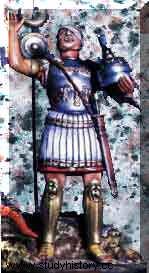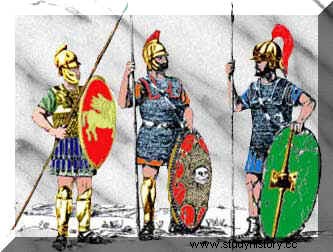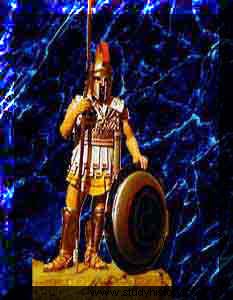On the side of the African metropolis, money played a very big role for the army, insofar as Carthage used mercenaries. No upheaval, it seems, has taken place in the military field. On the other hand, although the Punic ost did not have its own Polybius either, we know its organization better, thanks to iconography, thanks to the Greeks and the Latins. From the point of view of the composition, one must, apparently, note only modest changes. On the coasts of the Carthaginians were the contingents of the Punic cities, other non-Punic Africans, and finally men recruited in the Iberian Peninsula.
-

- Hannibal Barca
They served as before, as allies, subjects, mercenaries, or because they were subject to compulsory military service. We find a very similar picture and summarizes in a passage from Livy which puts in the mouth of Hannibal an address to his soldiers:"You, my old infantry, you, riders of the noblest families, mounted on horses with or without bridles, you bravest and most faithful of allies, you Carthaginians..."

This text from Livy also has a presentiment of interest in tactics. It recalls the existence of a heavy cavalry and a light cavalry. The first intervened in the battles to cause a shock effect, often in concert with the elephants mounted by a mahout and a soldier wearing a helmet, cuirass and javelin. It was composed of Carthaginians (helmet and breastplate, sword and spear) and Gauls. They harassed the enemy; The light cavalry came from the Iberian Peninsula and Numidia; there does not seem to be a very big difference between the fighters of these two origins, who used "parma" and javelin, except that the Hispanics had a short sword

An important difference compared to the Roman army, where the infantry remained "the queen of battles", deserves to be noted the mounted forces represented, in combat, an essential element of the Punic armies and they often made it possible to win the decision alone. Similarly, there were heavy infantry and light infantry. The first was formed in particular by Libyan contingents. At the start of the Second Punic War, they looked like brothers to Greek hoplites, carrying spears and swords, helmets with plumes, medium shields, leggings and breastplates with scales; they especially will be profoundly transformed during the conflict. The poet Silius Italiques, who is unfortunately only a poet, reminds us of its composition in a colorful painting, full of exotic and sonorous names. We first noticed citizen soldiers, 'the youth of Syrian Carthage':probably less numerous in the infantry, they formed the bulk of the heavy cavalry and the crews of the fleet.

